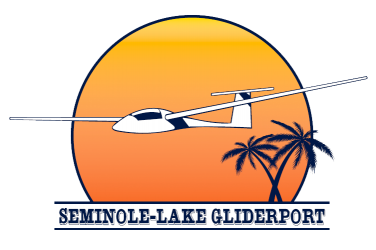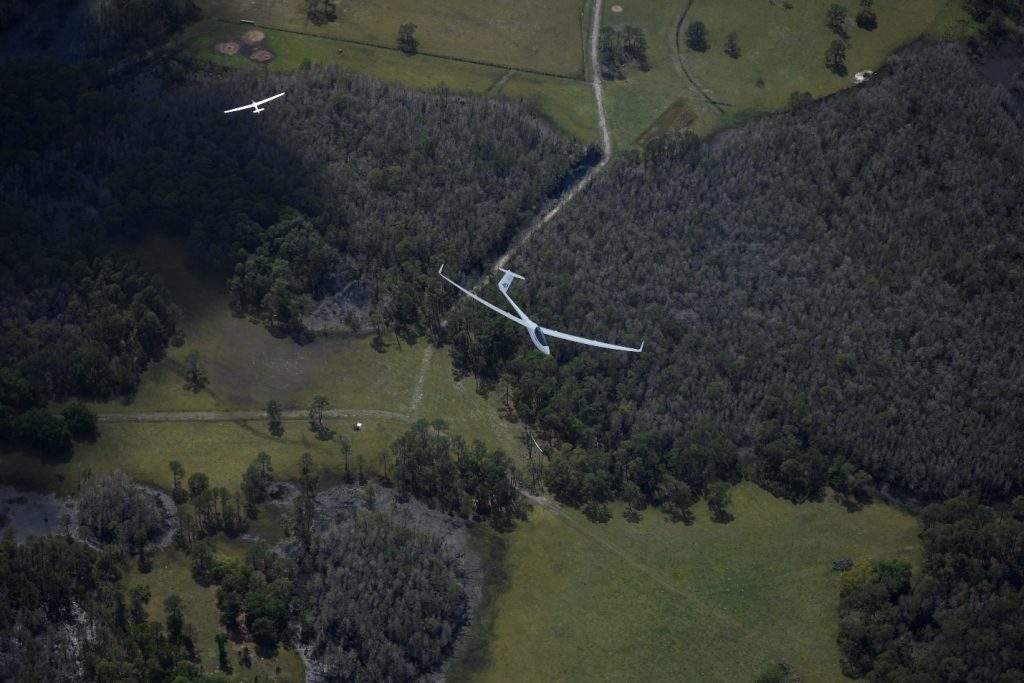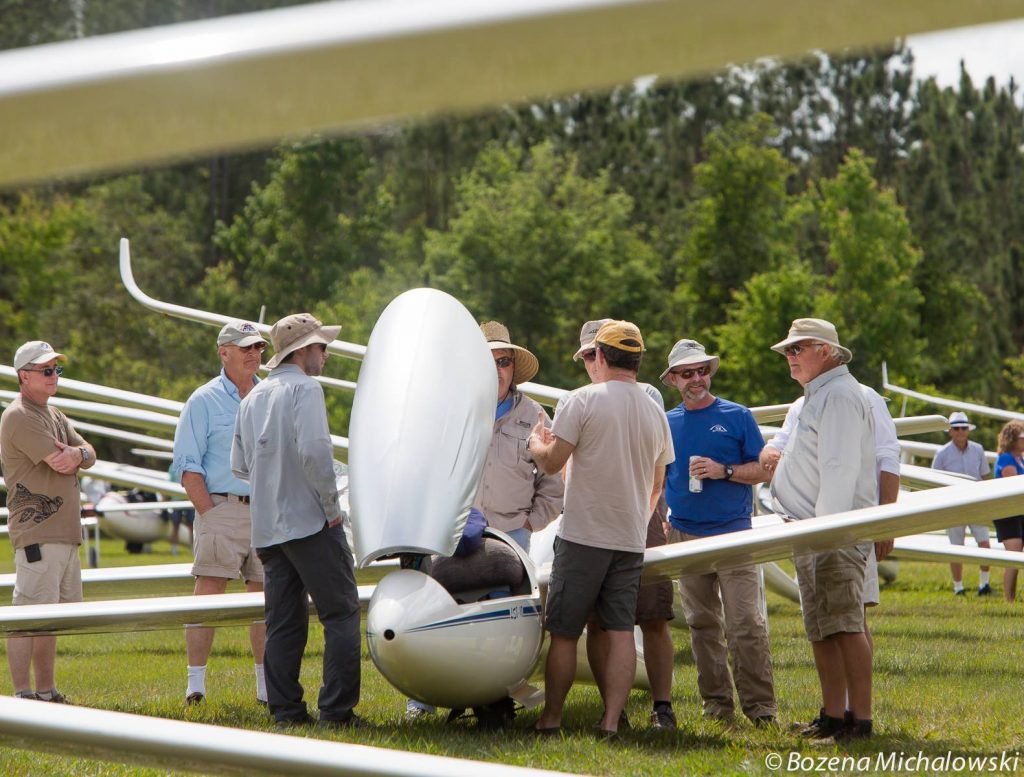2019 Senior Soaring Championship
5 Lessons from the Seniors
By Michael Marshall
– US JR Soaring Team
The 29th annual Senior Soaring Championship is finished! Every year, the organizers invite at least one junior pilot to fly the competition as a guest.
The combination of a large, very talented field of pilots and dynamic east coast soaring conditions make the Seniors an excellent training ground for European contests.
This year, I was fortunate to be invited by Rich Owen to fly the Seniors as a guest in preparation for this year’s Junior World Gliding Championships in Szeged, Hungary where I’ll be flying a Discus-2a in Standard Class.
Rich graciously offered me the use of ZO, his personal ASG-29Es for the contest. What a sweet ship!
ZO in its element! Photo courtesy of Ben Johnson.
I want to share a few lessons learned from the Seniors. I hope you’ll find them useful, whether you’re looking to start soaring cross-country, improve your cross-country soaring skills, or to fine tune your racing. Here goes:
1. Make a plan before you takeoff (but don’t be afraid to change it)
As a guest, I was last to launch every day. The task committee did an excellent job of designing tasks to use all (or very close to all) of the available soaring weather.
This meant I had to takeoff, climb up, and move to my planned starting point in the start cylinder immediately. On the first contest day, I planned when to start, but failed to plan where to start.
As a result, instead of focusing on sampling conditions (e.g. trying to determine the average climb rate, which side of the clouds are working, etc.) and lining up clouds for my first leg pre-start, I lost valuable time trying to determine where to start, which brings us to
2. You don’t need an optimal start
By spending too much time trying to get an optimal start, you risk being caught below final glide altitude when the day starts to die (e.g. in Florida, as the sea breeze moves in late in the day).
I should know; my failure to adequately plan my start before takeoff was one factor that contributed to my safe landout 10 miles short of the finish on the first contest day.
Starting 500 feet higher on a 2.5 knot average thermal day saves 2 minutes. On a 1000 point day with a 3 hour task, this equates to less than 12 points (1000 points/180 minutes x 2 minutes < 12 points)! However, you lose 400+ points if you don’t make it home at the end of the day!
3. Don’t get greedy
It is often tempting to push just a little further to get a few extra miles. For example, on the first contest day, I had final glide made, but it meant returning home 5 minutes under time. Instead, I pushed further south into an encroaching sea breeze to try to squeeze a few extra miles out of the day. I would have lost a few points by returning home under time. Instead, I lost over 400 points in a landout.
4. Keep your mind (and your eyes) open
Sailplane racing and cross-country soaring require two primary decision making loops. The outer loop focuses on the big picture, like which cloud line to follow or how deep to turn in a turn area. The inner loop complements the outer loop by focusing on the microscale decisions, like centering a thermal or changing flap settings, required to execute the big picture.
However, the outer loop is easily compromised, especially during stressful situations. As a result, it is easy to get “tunnel vision” and to forget to continually reevaluate the big picture using the latest information.
If you don’t keep your eyes open, you may miss the circling bird (or glider), or the cycling cu, or ________ that may make all the difference. I made several poor tactical decisions – like following dissipating clouds in the lee of lakes near Winter Haven – because I got distracted making microscale decisions and forget to continually reevaluate the big picture.
5. Know the birds in your area
Not all birds circle in lift (nor do all glider pilots). In Florida, it paid to look for soaring birds like bald eagles to mark good thermals. Other types of birds were hit or miss. And not all species act the same way in every location. You’ll probably turn up empty chasing seagulls in Florida, but the seagulls in Nephi, Utah are surprisingly good thermal markers.
A little local knowledge can go a long way, especially when the going gets rough.
My experience at the Seniors wouldn’t have been possible without a huge amount of support from the soaring community. First, I’d like to thank all of the Seniors contestants, contest management, and volunteers for welcoming me to their party.
I’d also like to thank Bo Michalowski and Ben Johnson for the outstanding photographs. For those of you that don’t know Ben, he takes air-to-air shots from a Duo Discus to raise money for the US Soaring Team.
Thanks also go to Doug Jacobs for flying with me on the third contest day and to my Dad (Don Marshall), Frank Spital, and Bill Foster for crewing for me throughout the contest.
Lastly, special thanks go to Leigh Zimmerman, Pete Alexander, and Rich Owen. Leigh Zimmerman is the mastermind behind getting me to the Seniors; without her, none of this would have been possible. Pete and Rich spent countless hours coaching me and working with me to fine tune my racing skills. In addition, Rich was an incredibly welcoming host who generously offered me the use of his ASG-29Es.
My next stop is the Region 5 North contest. I’m fortunate to have an excellent mentor and coach for the contest in Eric Mozer. We’ll be further fine tuning my east coast soaring skills while sharing his beautiful ASG-32Mi. See you in Perry!
My coaches and me (I’m 3rd from the left).


